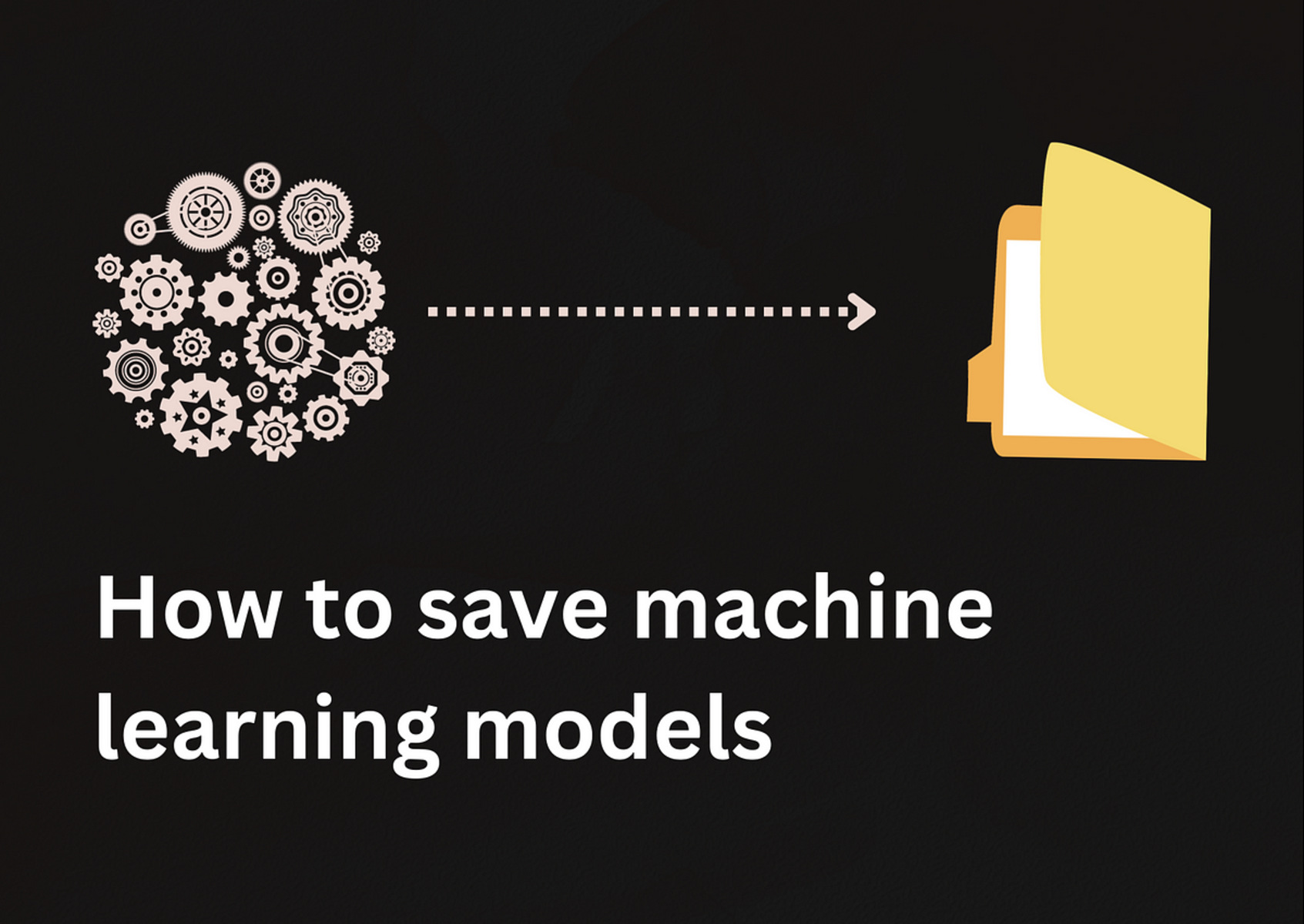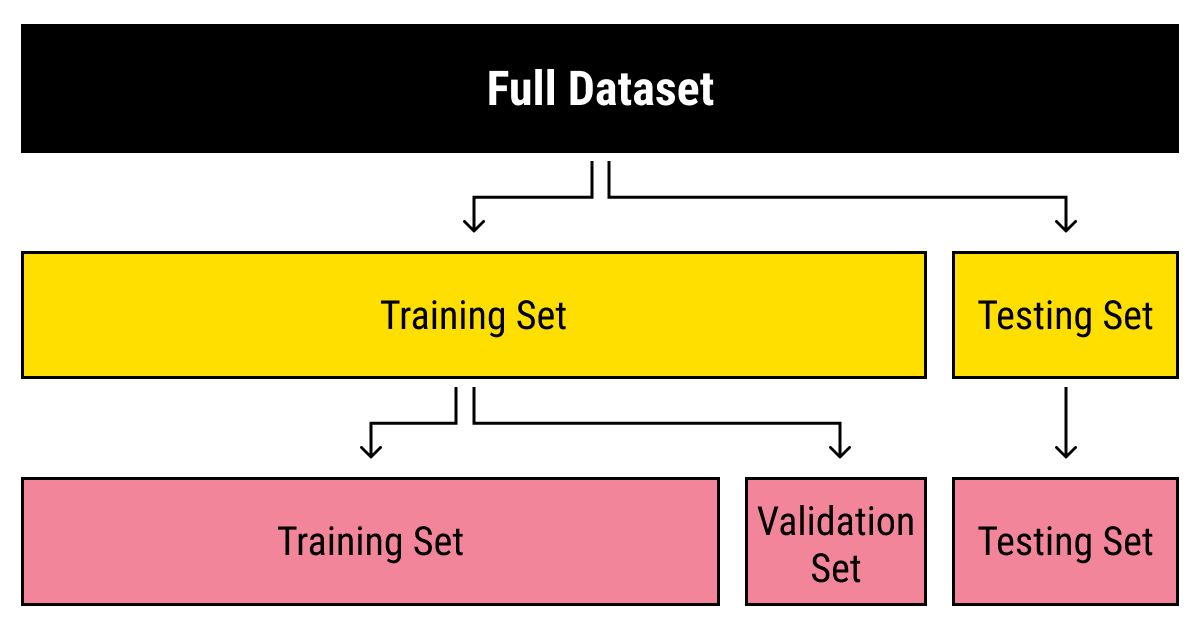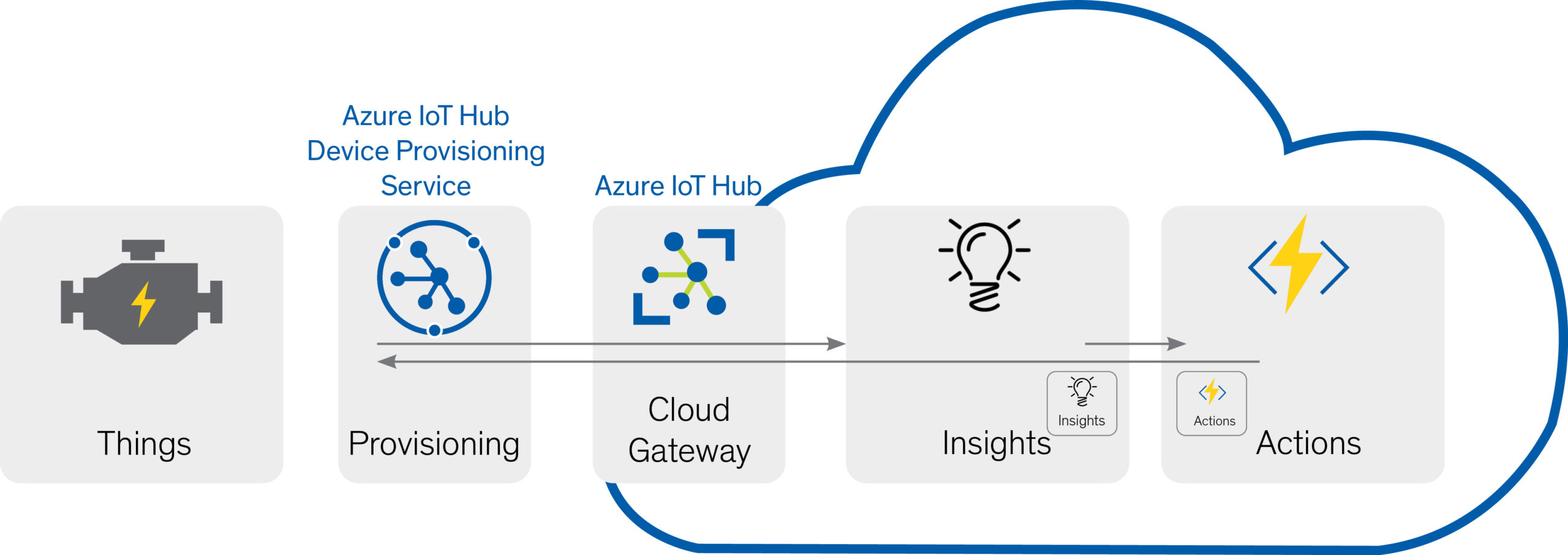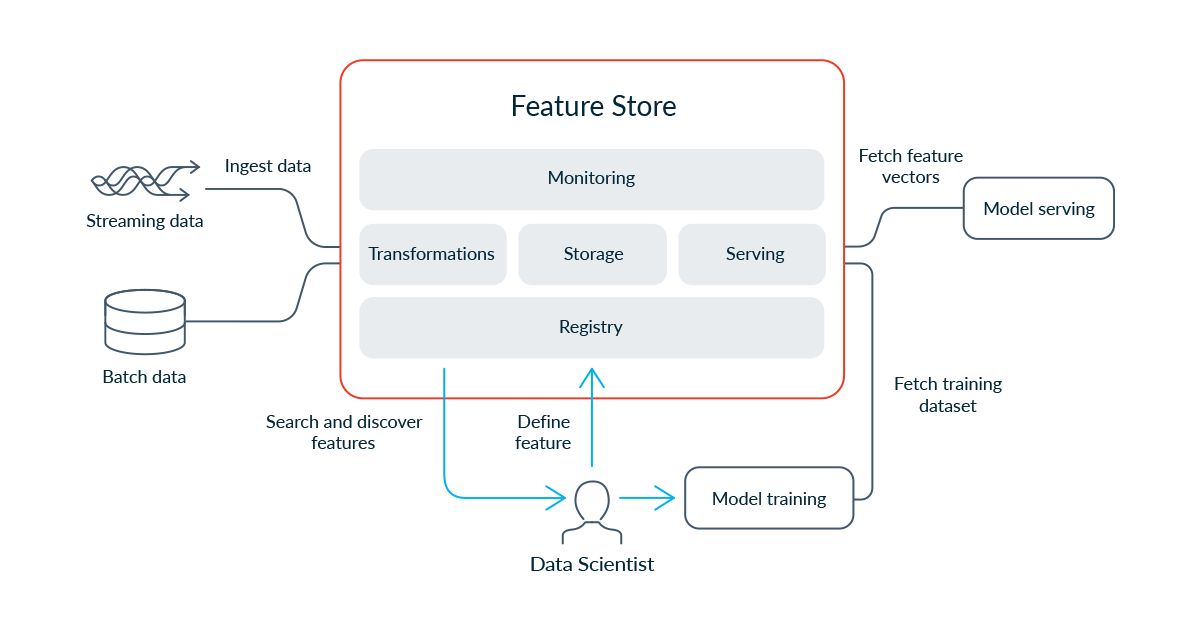Introduction
Metadata plays a crucial role in the field of machine learning as it provides valuable information about the data. It can be defined as the set of descriptive attributes or properties that describe and provide context to a piece of data. In simple terms, metadata is data about data.
When it comes to machine learning, metadata helps in understanding the characteristics and behavior of the data. It provides insights into the origin, structure, quality, and purpose of the data, which is essential for developing accurate and efficient machine learning models.
The use of metadata in machine learning is expanding rapidly as more and more organizations are leveraging the power of data to derive insights and make data-driven decisions. Metadata helps in streamlining and optimizing the machine learning workflow, from data preprocessing to model training and evaluation.
Before delving into the different types and uses of metadata in machine learning, it is crucial to understand its significance in the context of data-driven applications. Metadata empowers machine learning practitioners and data scientists to gain a deeper understanding of their data, ensuring that the models they develop are robust, reliable, and accurate.
Metadata provides essential information about the data’s structure, format, and semantics, enabling efficient data integration from multiple sources. It helps in resolving potential data quality issues, such as missing values, outliers, or inconsistencies, that can impact the performance of machine learning models.
Furthermore, metadata aids in selecting and extracting relevant features or attributes from the data, a crucial step in the feature engineering process. By analyzing the metadata, researchers can identify the most informative features that significantly contribute to the machine learning task at hand.
Overall, metadata acts as a guiding compass throughout the machine learning workflow, aiding in data understanding, model development, and result interpretation. It helps improve the overall efficiency and effectiveness of machine learning applications and assists in making informed decisions based on the insights derived from the data.
In the following sections, we will explore the different types of metadata in machine learning and delve deeper into their specific roles and applications within the machine learning workflow.
Definition of Metadata
Metadata refers to the descriptive attributes or properties that provide information about a piece of data. It can be defined as data about data. In the context of machine learning, metadata helps in understanding the characteristics and behavior of the data, thereby enabling the development of accurate and efficient machine learning models.
Metadata provides crucial information about the data’s structure, format, and semantics. It includes details about the data source, its collection method, the variables or features it contains, and any relationships between those variables. This information is valuable for researchers, data scientists, and machine learning practitioners as it helps them gain a deeper understanding of the data they are working with.
Metadata can be diverse and can include various types of information depending on the context. It typically includes information such as:
- The name and description of the data
- The format and encoding of the data
- The creation date and time
- The size or volume of the data
- The source or origin of the data
- The data collection methods and processes
- The variables or features present in the data
- The data quality measures and indicators
- Any transformations or preprocessing steps applied to the data
Metadata helps in organizing, categorizing, and managing data effectively. It acts as a guide or roadmap for understanding and interpreting the data. By providing context and information about the data, metadata helps in making informed decisions regarding data selection, preprocessing, and model development.
Moreover, metadata plays a critical role in data integration and interoperability. It enables the seamless integration of data from multiple sources by providing information about the compatibility and consistency of various datasets. Metadata facilitates the understanding of the relationships and dependencies between different datasets, making it easier to combine and analyze them in a unified manner.
Overall, metadata acts as a fundamental component in the machine learning workflow, enabling data scientists and researchers to gain a comprehensive understanding of the data they are working with. It provides valuable insights and context that are essential for developing accurate and reliable machine learning models.
Importance of Metadata in Machine Learning
Metadata plays a crucial role in machine learning, offering significant benefits throughout the entire machine learning process. Here are some key reasons why metadata is important in the field of machine learning:
1. Data Understanding: Metadata provides valuable information about the structure, format, and semantics of the data. It helps researchers and data scientists gain a deeper understanding of the data they are working with, including its origin, quality, and variables. This understanding is vital for effective data exploration and analysis, allowing for better decision-making during the machine learning process.
2. Dataset Selection: Metadata helps in selecting the most suitable datasets for specific machine learning tasks. By evaluating the metadata of different datasets, data scientists can identify the datasets that align with their project requirements and objectives. Metadata assists in assessing factors such as dataset size, data quality, and the variables available, ensuring that appropriate datasets are chosen for model development.
3. Data Preprocessing: Metadata aids in data preprocessing, which is a critical step in machine learning. It provides insights into the data’s quality, highlighting any missing values, outliers, or inconsistencies that need to be addressed. Metadata guides data cleaning and preprocessing operations by providing information about transformations, normalizations, or imputations that may have been applied to the data previously.
4. Feature Engineering: Metadata is particularly valuable in feature engineering, where relevant features or attributes are selected for model development. By analyzing the metadata, data scientists can identify the most informative variables that contribute significantly to the machine learning task. Metadata helps in understanding the relationships between different features and assists in appropriate feature selection and transformation.
5. Model Development: Metadata plays a pivotal role in model development by providing context and guidance. It helps data scientists understand the assumptions, limitations, and biases in the data, which can impact the model’s performance. Metadata assists in selecting appropriate algorithms and techniques based on the data characteristics, leading to the development of accurate and robust machine learning models.
6. Result Interpretation: Metadata aids in result interpretation and model evaluation. It helps in understanding the implications and limitations of the model’s predictions or classifications. By examining the metadata, data scientists can analyze the confidence levels, uncertainties, and potential biases associated with the model’s outputs, enabling informed decision-making based on the model’s performance.
Overall, metadata is of utmost importance in machine learning as it provides essential context and information about the data. It guides data understanding, preprocessing, feature engineering, model development, and result interpretation. By leveraging metadata effectively, data scientists can improve the accuracy, efficiency, and reliability of their machine learning models.
Types of Metadata in Machine Learning
Metadata in machine learning can be categorized into different types based on the purpose and nature of the information it provides. These types of metadata serve specific roles in the machine learning process. Let’s explore some of the common types of metadata in machine learning:
1. Descriptive Metadata: This type of metadata describes the basic information about the data. It includes details such as the dataset’s name, description, source, and any relevant annotations. Descriptive metadata helps in understanding the overall context and purpose of the data, making it easier to select appropriate datasets for specific machine learning tasks.
2. Structural Metadata: Structural metadata provides information about the structure and organization of the data. It includes details on the data format, schema, and relationships between different variables or columns. Structural metadata helps in understanding the data’s composition and enables efficient data integration and analysis.
3. Administrative Metadata: Administrative metadata includes information relevant to the management and governance of the data. It includes details such as the data’s owner, creation date, access permissions, and any relevant policies or regulations. Administrative metadata helps in ensuring data integrity, security, and compliance with legal and ethical standards.
4. Technical Metadata: Technical metadata provides information about the technical aspects of the data. It includes details such as the data size, format, encoding, and any transformations or preprocessing applied to the data. Technical metadata helps in understanding the data’s technical requirements, guiding data preprocessing and ensuring compatibility with machine learning algorithms.
5. Provenance Metadata: Provenance metadata captures the history and lineage of the data. It includes information about the data’s origin, collection methods, and any transformations it has undergone. Provenance metadata helps in establishing data credibility, providing transparency, and enabling reproducibility of the machine learning process.
6. Domain-Specific Metadata: Domain-specific metadata includes information specific to the application or field of study. It may include domain-specific terminology, rules, or constraints that are relevant to the interpretation and analysis of the data. Domain-specific metadata enhances the understanding of the data in its specific context and ensures accurate modeling and analysis.
These are just a few examples of the types of metadata commonly used in the field of machine learning. The availability and importance of each type of metadata may vary depending on the specific project and data characteristics. By leveraging the appropriate types of metadata, data scientists and researchers can gain valuable insights, ensure data quality, and develop robust machine learning models.
Descriptive Metadata
Descriptive metadata is a type of metadata that provides basic information about the data, helping to describe and contextualize it. This type of metadata aims to convey essential details about the data’s characteristics and purpose. Descriptive metadata is crucial in machine learning as it aids in understanding the overall context and relevance of the data for specific applications.
The key components of descriptive metadata include:
- Data Name: This is the name or title given to the dataset, which serves as a unique identifier.
- Data Description: It provides a concise overview of the dataset’s content, including the domain, subject matter, and scope of the data.
- Data Source: Descriptive metadata includes information about the origin or source of the data, such as the organization that collected it or the website it was obtained from.
- Annotations: Annotations refer to additional notes or comments about the data that provide further context or insights into its characteristics or limitations.
Descriptive metadata facilitates efficient data discovery and selection by providing concise information to evaluate the suitability of the dataset for a specific machine learning task. Researchers can quickly assess whether the data aligns with their project requirements and objectives based on the descriptive metadata available.
This type of metadata aids in data understanding, allowing data scientists to gain insights into the data’s purpose and relevance to specific applications. By understanding the domain and subject matter of the data, researchers can make informed decisions about how to preprocess and model the data effectively.
Furthermore, descriptive metadata contributes to data organization, making it easier to manage and search for specific datasets within large data repositories. It helps in categorizing and labeling datasets based on their unique characteristics, enabling efficient data retrieval and integration.
An accurate and informative description in the descriptive metadata helps in documenting the data’s provenance and ensures that the data remains traceable and reproducible. It provides a record of important details associated with the data, such as its creation date, version, and any updates or modifications it has undergone.
In summary, descriptive metadata in machine learning serves as a snapshot of the data, providing basic details about its content, source, and purpose. It helps in data discovery, understanding, and organization, enhancing the data exploration and modeling processes. With descriptive metadata, data scientists can make informed decisions about data selection and preprocessing, leading to more accurate and meaningful results in machine learning applications.
Structural Metadata
Structural metadata is a type of metadata that provides information about the structure and organization of the data. It describes the arrangement, format, and relationships between different elements within the dataset. Structural metadata plays a crucial role in machine learning as it helps in understanding the data’s composition and assists in efficient data integration and analysis.
The key components of structural metadata include:
- Data Format: This refers to the format in which the data is stored, such as CSV, JSON, XML, or database format. Understanding the data format is essential for identifying the appropriate tools and techniques for data manipulation and analysis.
- Data Schema: The data schema defines the structure and organization of the data, including the names, types, and relationships of the variables or fields within the dataset. It provides a blueprint of the data’s structure and aids in data integration and interoperability.
- Data Relationships: Structural metadata describes the relationships between different variables or columns within the dataset, indicating any dependencies or associations. Understanding these relationships helps in identifying potential patterns or correlations between variables during data analysis.
Structural metadata enables efficient data integration by providing insights into the compatibility and consistency of different datasets. It helps in identifying common variables or fields across datasets, making it easier to combine and analyze data from diverse sources.
Additionally, structural metadata aids in data exploration and analysis by providing a blueprint of the data’s structure. With the information about variable names and relationships, researchers can quickly understand the organization of the data and identify key features for further analysis.
Moreover, structural metadata plays a crucial role in data preprocessing and transformation. It guides the identification and handling of missing values, outliers, or inconsistencies within the data structure. By understanding the data’s structure, researchers can apply appropriate preprocessing techniques to ensure data quality and prepare the data for model development.
Structural metadata also helps in selecting and extracting relevant features or attributes for machine learning model development. It provides insights into the hierarchy and dependencies within the data, assisting in the feature engineering process. Researchers can identify the most informative variables and relationships that significantly contribute to the machine learning task.
In summary, structural metadata in machine learning provides information about the data’s structure, format, and relationships. It aids in data integration, understanding, and preprocessing for efficient analysis and modeling. By leveraging structural metadata, data scientists can ensure the compatibility and quality of data, leading to more accurate and meaningful results in machine learning applications.
Administrative Metadata
Administrative metadata is a type of metadata that encompasses information related to the management and governance of the data. It provides details about the ownership, access rights, and policies associated with the data. Administrative metadata plays a crucial role in machine learning as it ensures data integrity, security, and compliance with legal and ethical standards.
The key components of administrative metadata include:
- Data Ownership: Administrative metadata specifies the individual or organization that owns or is responsible for the data. It helps establish accountability and ensures that proper permissions and usage rights are observed.
- Data Creation and Modification: This includes the metadata related to the creation, modification, and version control of the data. It provides information about when the data was created or collected, any updates or modifications made, and the history of changes.
- Data Access and Usage: Administrative metadata outlines the access permissions and restrictions associated with the data. It specifies who has authorized access to the data and under what conditions. This helps in maintaining data security and privacy.
- Data Policies and Regulations: Administrative metadata incorporates information about the policies, guidelines, and regulations that govern the use and handling of the data. It ensures compliance with legal and ethical standards, such as data protection laws or industry regulations.
Administrative metadata is crucial for ensuring data integrity and trustworthiness. By clearly defining ownership, access rights, and data usage policies, administrative metadata helps prevent unauthorized access, data misuse, or data breaches. It establishes guidelines for maintaining data security and privacy throughout the machine learning process.
Furthermore, administrative metadata aids in data governance and compliance. It ensures that data handling practices align with legal and ethical requirements, minimizing the risks associated with non-compliance. It also helps in establishing transparency, trust, and accountability in data-driven applications.
Administrative metadata supports proper versioning and management of the data. Researchers can track the history of changes made to the data and understand the context of each version, facilitating reproducibility and traceability in the machine learning workflow.
In addition, administrative metadata is important for collaboration and data sharing. It allows researchers and organizations to define and communicate the terms and conditions under which the data can be shared, facilitating efficient collaboration and knowledge exchange.
Overall, administrative metadata in machine learning ensures data governance, security, and compliance. By leveraging administrative metadata properly, data scientists can establish clear guidelines for data handling, maintain data integrity, and comply with legal and ethical standards.
Technical Metadata
Technical metadata is a type of metadata that provides information about the technical aspects of the data. It encompasses details about the data’s format, size, encoding, and any transformations or preprocessing steps that have been applied. Technical metadata is important in machine learning as it helps in understanding the technical requirements of the data and ensures compatibility with machine learning algorithms.
The key components of technical metadata include:
- Data Format: Technical metadata specifies the format in which the data is stored, such as CSV, JSON, XML, or database format. Understanding the data format is crucial for selecting appropriate tools and techniques for data manipulation and analysis.
- Data Size: Technical metadata provides information about the size or volume of the data. This helps in assessing the computational resources required for processing and analyzing the data, ensuring the availability of sufficient memory and storage space.
- Data Encoding and Compression: Technical metadata describes the encoding scheme used for representing the data, such as ASCII, UTF-8, or binary encoding. It also includes details about any compression techniques applied to reduce the data size, such as gzip or zlib compression.
- Data Transformations and Preprocessing: Technical metadata includes information about any transformations, preprocessing, or data cleaning steps that have been applied to the data. This helps in understanding how the data has been modified or prepared for analysis.
Technical metadata guides the data handling and processing operations in machine learning. By understanding the data’s technical requirements, data scientists can employ appropriate tools and techniques for data manipulation and analysis.
Furthermore, technical metadata ensures compatibility with machine learning algorithms and frameworks. Different algorithms may require specific data formats or encodings, and technical metadata helps in verifying that the data meets these requirements. It allows researchers to adapt or transform the data as necessary to ensure compatibility with the chosen machine learning model.
Technical metadata also assists in assessing the scalability of the data. By providing information about the data size and storage requirements, it helps in determining the feasibility of handling large-scale data sets and whether additional computational resources are needed.
Moreover, technical metadata aids in data quality assessment. It provides insights into the data’s origin, collection methods, and any preprocessing steps applied. This information helps researchers evaluate potential biases, limitations, or data quality issues that may influence the accuracy and reliability of the machine learning models.
In summary, technical metadata in machine learning provides information about the data’s technical aspects such as format, size, encoding, and transformations. It guides data handling, ensures compatibility with machine learning algorithms, and assists in assessing data scalability and quality. By leveraging technical metadata effectively, data scientists can employ appropriate tools and techniques for data manipulation, preprocessing, and analysis in their machine learning workflows.
Metadata in Data Preprocessing
Data preprocessing is a crucial step in machine learning that involves transforming raw data into a format suitable for analysis and model development. Metadata plays an important role in guiding and informing the data preprocessing process. It provides valuable insights into the data’s characteristics, quality, and structure, enabling effective data cleaning, transformation, and preparation.
Metadata in data preprocessing includes:
- Data Quality Measures: Metadata provides information about data quality measures, such as missing values, outliers, or inconsistencies. This helps in identifying and addressing data quality issues during the preprocessing stage, ensuring reliable and accurate analysis.
- Data Transformations: Metadata describes any transformations or preprocessing steps that have been applied to the data. This information guides the selection and application of appropriate preprocessing techniques, such as normalization, scaling, or imputation.
- Data Dependencies: Metadata helps in understanding the relationships and dependencies within the data, guiding the handling of missing values or inconsistencies. By analyzing the metadata, researchers can identify patterns or dependencies between variables, which can be leveraged during data imputation or feature engineering.
Metadata assists in identifying and addressing data quality issues. By analyzing the metadata, data scientists can identify variables with high amounts of missing data or outliers. They can then make informed decisions on how to handle these issues, such as imputing missing values or removing outliers, to prevent biased or inaccurate analysis.
Metadata also guides the selection and application of appropriate data preprocessing techniques. By understanding the transformations or preprocessing steps that have been applied to the data, researchers can decide whether additional preprocessing is required. Metadata helps in maintaining consistency and compatibility with previous data processing steps.
Furthermore, metadata aids in feature engineering, a critical aspect of data preprocessing. By analyzing the metadata, researchers can identify the most informative variables or features for the machine learning task. They can also leverage the information about variable relationships to create new features or derive meaningful representations from the data.
Metadata ensures traceability and reproducibility of the data preprocessing steps. By documenting the transformations and preprocessing techniques applied to the data, researchers can recreate the preprocessing pipeline and reproduce the same processed data. This enhances transparency and allows for consistent analysis and model development.
In summary, metadata in data preprocessing provides valuable insights into the data’s quality, transformations, and dependencies. It guides data cleaning, transformation, and feature engineering activities. By leveraging metadata effectively during data preprocessing, data scientists can ensure data integrity, improve analysis accuracy, and develop reliable machine learning models.
Metadata in Feature Engineering
Feature engineering is a crucial phase in machine learning that involves selecting and transforming the relevant variables or features from the raw data to improve model performance. Metadata plays a significant role in guiding the feature engineering process by providing insights into the data’s characteristics, relationships, and relevance to the machine learning task at hand.
Metadata in feature engineering includes:
- Variable Information: Metadata provides details about the variables or features present in the data. It includes information such as variable names, types, and descriptions, helping researchers understand the nature and properties of each variable.
- Data Relationships: Metadata describes the relationships between different variables. It helps in identifying potentially useful interactions or dependencies between variables, guiding the creation of new features or transformations.
- Variable Importance: Metadata may include information about the importance or relevance of variables to the machine learning task. This helps in identifying the most informative features that significantly contribute to the predictive power of the model.
Metadata aids in selecting the most relevant variables or features for the machine learning task. By understanding the characteristics and relevance of each variable, researchers can make informed decisions about which variables to include or exclude in the feature set. This helps in reducing noise and improving model performance.
Metadata also guides the creation of new features or transformations. By analyzing the relationships between variables, researchers can identify opportunities for generating new features that capture meaningful interactions or patterns within the data. Metadata provides insights into potential feature engineering techniques, such as interactions, polynomial features, or logarithmic transformations.
Furthermore, metadata helps researchers evaluate the importance of variables in relation to the machine learning task. By considering the variable importance information in the metadata, researchers can prioritize the selection of features and focus on those that have a higher impact on the model’s performance. This helps in reducing the dimensionality of the feature space and improving computational efficiency.
Metadata also assists in maintaining consistency and reproducibility in feature engineering. By documenting the feature engineering techniques applied and their corresponding transformations, researchers can recreate and reproduce the same set of features for future analysis or model iterations. This enhances transparency and ensures consistent feature engineering practices.
In summary, metadata in feature engineering provides valuable insights into the variables, relationships, and importance within the data. It guides the selection of relevant features, the creation of new features, and the evaluation of their importance to the machine learning task. By leveraging metadata effectively in feature engineering, researchers can enhance model performance, reduce noise, and improve the interpretability of the machine learning models.
Metadata in Model Training
Model training is a crucial phase in machine learning where the selected features are used to train a model on the labeled data. Metadata plays an important role in guiding the model training process by providing information about the data, its quality, and any relevant transformations or preprocessing steps applied. It helps researchers understand the underlying characteristics and limitations of the data, ensuring the appropriate selection and tuning of the machine learning algorithms.
Metadata in model training includes:
- Data Characteristics: Metadata provides insights into the statistical properties of the data, such as its distribution, variance, or skewness. By understanding these characteristics, researchers can choose appropriate algorithms and techniques that are well-suited for the data’s nature.
- Variable Transformations: Metadata describes any transformations or preprocessing steps applied to the variables during feature engineering or data preprocessing stages. This information is essential for ensuring the compatibility and applicability of the selected machine learning algorithms.
- Data Limitations and Assumptions: Metadata may include information about any limitations or assumptions associated with the data. This helps researchers make informed decisions about the suitability of different machine learning algorithms and assess their fitness for the data at hand.
Metadata assists in selecting appropriate machine learning algorithms based on the data characteristics. By considering the nature of the data, such as its linearity, non-linearity, or high dimensionality, researchers can choose algorithms that are well-suited for handling such data. Metadata also helps in understanding the suitability of the chosen algorithms for the specific problem and data distribution.
Metadata guides researchers in handling any transformations or preprocessing steps applied to the variables. By being aware of the transformations, such as scaling or normalization, researchers can ensure that the selected machine learning algorithms can handle the transformed features effectively and that the assumptions of those algorithms are not violated.
Furthermore, metadata aids in understanding the limitations and assumptions associated with the data. This information is crucial in selecting appropriate algorithms that align with the data’s characteristics and limitations. It helps researchers avoid models that may be overly complex or biased for the specific data.
Metadata also assists in understanding potential challenges or biases in the data distribution. This awareness helps researchers take the necessary precautions during model training, such as applying appropriate sampling techniques or regularization methods to handle data imbalance or overfitting.
In summary, metadata in model training provides insights into the data characteristics, variable transformations, and limitations of the data. It guides the selection of suitable machine learning algorithms, ensures compatibility with the data’s transformation pipeline, and helps researchers make informed decisions about assumptions and limitations. By leveraging metadata effectively in model training, researchers can develop accurate and reliable machine learning models that are well-suited for the specific data and problem.
Metadata in Model Evaluation
Model evaluation is a critical phase in machine learning that involves assessing the performance and effectiveness of the trained model. Metadata plays a significant role in guiding the model evaluation process by providing insights into the data, model specifications, and any relevant preprocessing or feature engineering steps undertaken. It aids in understanding the context, limitations, and potential biases associated with the model’s predictions, allowing for informed decision-making based on the evaluation results.
Metadata in model evaluation includes:
- Data Characteristics: Metadata provides information about the statistical properties of the data, such as its distribution, variance, or skewness. Understanding these characteristics helps researchers assess the appropriateness of different evaluation metrics and interpret the performance of the model in the context of the data.
- Model Specifications: Metadata includes details about the underlying machine learning algorithm, model architecture, hyperparameters, and any other specific model configurations. This information helps in understanding the model’s strengths, weaknesses, and suitability for the specific problem.
- Transformations and Preprocessing: Metadata describes any transformations or preprocessing steps applied to the data or features during feature engineering or data preprocessing stages. This information guides researchers in selecting appropriate evaluation metrics and interpreting the model’s performance relative to the transformed data.
Metadata aids in selecting appropriate evaluation metrics based on the data characteristics. By considering the nature of the data, such as class imbalance or ordinal variables, researchers can choose metrics that are well-suited for assessing the model’s performance in the specific context. Metadata enables researchers to interpret the evaluation results accurately.
Metadata helps in understanding the model’s strengths and weaknesses in relation to the problem at hand. By considering the model specifications documented in the metadata, researchers can assess the model’s ability to handle specific data characteristics, such as non-linearity or high dimensionality. It helps in understanding whether the model’s behavior aligns with the problem requirements.
Furthermore, metadata aids in understanding the impact of transformations and preprocessing on the model’s performance. By being aware of the transformations applied during feature engineering or data preprocessing, researchers can assess whether the model’s performance is consistent with the transformed data and determine if there are any potential biases or limitations in the evaluation results.
Metadata assists in addressing potential biases or limitations in the model’s predictions. By considering the metadata information related to the data source, preprocessing steps, or feature engineering techniques, researchers can analyze the model’s performance specifically in the context of potential biases introduced by these factors. It helps in making informed decisions and recommendations based on the evaluation results.
In summary, metadata in model evaluation provides insights into the data characteristics, model specifications, and transformations applied during preprocessing. It guides the selection of appropriate evaluation metrics, helps interpret the model’s strengths and weaknesses, and assists in addressing potential biases in the evaluation process. By leveraging metadata effectively in model evaluation, researchers can accurately assess the performance and reliability of machine learning models in the specific context of the data and problem at hand.
Challenges in Handling Metadata
While metadata plays a crucial role in machine learning, there are several challenges associated with handling metadata effectively. These challenges arise from various factors, including data quality, standardization, complexity, and scalability. It is important to address these challenges to ensure the reliable and accurate use of metadata in the machine learning process.
1. Data Quality: One of the primary challenges is ensuring the quality of metadata itself. Metadata can be prone to errors, inconsistencies, or missing information, which can negatively impact the reliability and validity of the machine learning process. Data scientists need to invest effort in verifying the accuracy and completeness of metadata to ensure its integrity.
2. Standardization: Maintaining standardized metadata formats across different data sources can be challenging. Inconsistencies in metadata formats, naming conventions, or data descriptions can make it difficult to integrate and compare data from multiple sources. Achieving consistent standards and ensuring interoperability across diverse datasets is crucial in enabling effective data analysis and modeling.
3. Complexity: Metadata management can become complex as the volume and variety of data increase. As organizations deal with vast amounts of data from various sources, managing the metadata associated with each dataset becomes challenging. Data scientists need efficient methods and tools to handle and organize metadata effectively for streamlined analysis and modeling.
4. Scalability: As the size and complexity of datasets grow, scalability becomes a significant challenge in metadata management. Handling metadata for large-scale datasets requires efficient storage, retrieval, and processing mechanisms. Scalability challenges need to be addressed to ensure seamless metadata management in machine learning workflows.
5. Evolving Data: Data can change over time, and metadata needs to be continuously updated to reflect these changes. With evolving data, metadata must be reviewed and revised periodically to ensure its accuracy and relevance. Data scientists need to establish robust mechanisms to track and update metadata to maintain its integrity and usefulness.
6. Privacy and Security: Metadata may contain sensitive information, such as data sources, data owners, or access permissions, which need to be protected. Ensuring privacy and security of metadata becomes crucial to prevent unauthorized access and data breaches. Data scientists must adopt appropriate security measures to safeguard metadata and adhere to privacy regulations.
Addressing these challenges requires proper governance, data management strategies, and the use of efficient metadata systems and tools. Establishing standardized metadata practices, ensuring data quality, implementing secure storage and retrieval mechanisms, and investing in scalable infrastructure are essential steps to overcome these challenges and enable the effective use of metadata in machine learning.
Best Practices for Metadata Management in Machine Learning
Effective metadata management is crucial for successful machine learning projects. Adopting best practices for metadata management ensures the integrity, quality, and usefulness of metadata throughout the machine learning workflow. Here are some key best practices for metadata management in machine learning:
1. Define a Metadata Strategy: Establish a clear metadata strategy that outlines the goals, scope, and standards for metadata management. Define metadata attributes, naming conventions, and documentation requirements to ensure consistency and interoperability across datasets.
2. Document Metadata: Thoroughly document metadata attributes and provide clear descriptions for each component. Include information about the data source, data collection methods, any preprocessing or transformations applied, and the intended use or context of the data. Accurate and detailed documentation helps in understanding the metadata and supports reproducibility.
3. Ensure Data Quality: Regularly monitor and assess the quality of metadata. Implement data validation checks to ensure accurate and complete metadata. Address any errors, inconsistencies, or missing information promptly. Continuously improve data quality processes to maintain the integrity of metadata.
4. Establish Data Governance: Implement data governance practices to ensure consistent metadata management across the organization. Define roles and responsibilities for metadata management and enforce metadata standards and guidelines. Implement appropriate access controls and security measures to protect sensitive metadata.
5. Standardize Metadata Formats: Adopt standardized metadata formats, naming conventions, and data descriptions. Standardization enables efficient data integration, comparison, and sharing across different datasets and projects. Ensure interoperability by adhering to widely used metadata standards in the industry.
6. Regularly Update Metadata: Metadata should be regularly updated to reflect changes in the data or data processing. Implement mechanisms to track and update metadata when new data is added or modified. Regularly review and revise metadata to ensure its accuracy, relevance, and alignment with the evolving data.
7. Use Metadata Management Tools: Leverage metadata management tools and systems to streamline the process of metadata collection, storage, and retrieval. These tools assist in organizing, categorizing, and searching metadata efficiently, enabling easier access to relevant information and enhancing metadata management practices.
8. Foster Collaboration: Encourage collaboration and communication among data scientists, domain experts, and data owners to ensure metadata accuracy and completeness. Foster a culture of sharing knowledge and expertise related to metadata management. Facilitate discussions and feedback loops to improve metadata quality and documentation.
9. Document Transformations and Preprocessing: Clearly document any transformations, preprocessing steps, or feature engineering techniques applied to the data. This helps in understanding the data processing pipeline and ensures reproducibility of the preprocessing steps. Clearly describing the data processing history aids in interpreting the final model results accurately.
10. Perform Metadata Audits: Conduct periodic audits to evaluate the quality and consistency of metadata across the organization. Identify areas of improvement, address any issues or discrepancies, and refine metadata management processes based on the audit findings. Continuous monitoring and improvement of metadata management practices contribute to the success of machine learning projects.
By following these best practices, organizations can effectively manage metadata in machine learning projects. Adhering to metadata management standards, ensuring data quality, and employing efficient metadata management tools and processes enable more accurate analysis, improved collaboration, and better decision-making based on the insights derived from metadata.
Conclusion
Metadata plays a critical role in machine learning, providing valuable information about the data’s characteristics, structure, and context. It facilitates data understanding, preprocessing, feature engineering, model training, and evaluation, ultimately contributing to the development of accurate and reliable machine learning models.
Throughout the machine learning workflow, different types of metadata, including descriptive metadata, structural metadata, administrative metadata, and technical metadata, provide insights and guidance. Descriptive metadata helps in data discovery and understanding, while structural metadata aids in data integration and organization. The administrative metadata ensures data governance and compliance, and technical metadata supports data preprocessing and compatibility with machine learning algorithms.
While metadata offers numerous benefits, there are challenges to overcome for effective metadata management. Ensuring data quality, standardization, scalability, and addressing evolving data are some of the key challenges faced. Mitigating these challenges and adopting best practices, such as defining a metadata strategy, ensuring data quality, standardizing metadata formats, and using metadata management tools, can optimize the use of metadata in machine learning projects.
In conclusion, metadata serves as a valuable asset in the machine learning journey, guiding researchers in data understanding, preprocessing, feature engineering, model training, and evaluation. By leveraging metadata effectively, data scientists can enhance the accuracy, reliability, and interpretability of machine learning models, driving better insights and decision-making from the data.

























